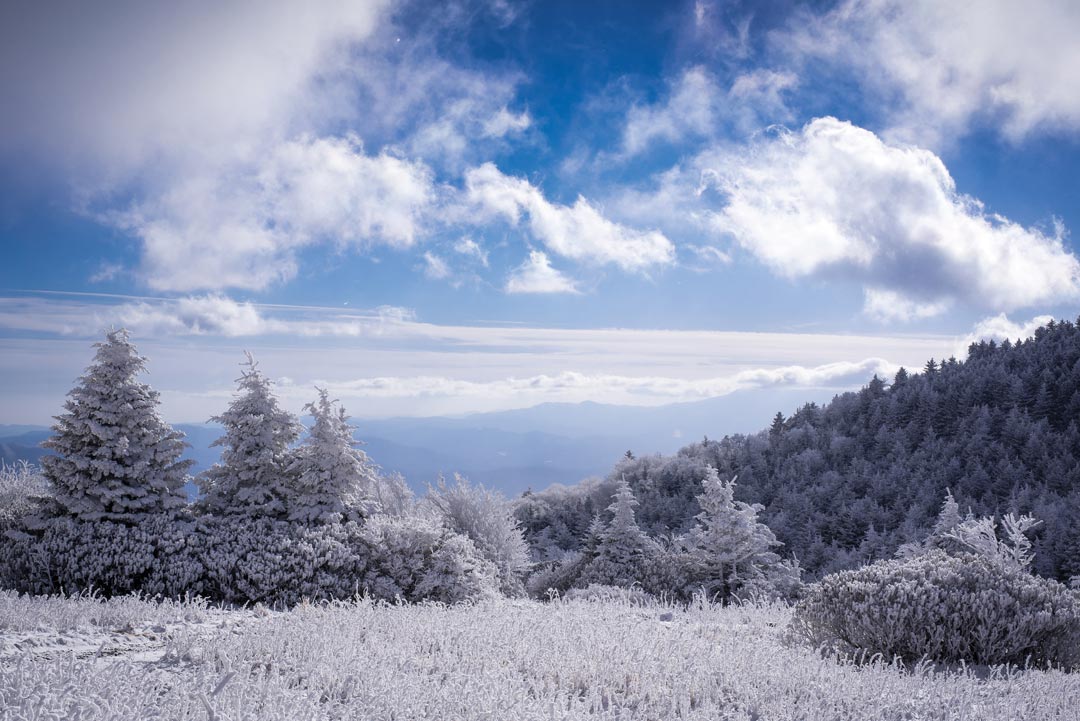I’m not totally sure I’d be around to write this now if, before setting out on a backpacking trip last January, I hadn’t recently binge-listened to survival podcasts. The message repeated during each episode in ominous, Rod Serling-like tones: it’s seldom one poor choice that leads to wilderness tragedy but a whole series of compounding follies.
Heading out underprepared had been my first bad decision. Continuing on by way of the steep, snowy, icy, boulder-strewn trail in the Mountain Bridge Wilderness Area looked a lot like bad decision #2, which would inevitably lead to #3 and #4 and the kind of fix that ends in hospitals or cemeteries. By contrast, admitting I’d been defeated by a winter storm in, of all places, South Carolina, didn’t seem like such a great tragedy.
So I hiked to the nearest highway and hitched a ride, correctly trusting that drivers out in such weather would be proud enough of their vehicles and hardy spirit to gladly help a hiker in need. (Thank you, Seth, of Greenville.) Soon enough, I was home in front of a roasting-hot wood stove, leafing through a book I should have reviewed more thoroughly before I left—Andrew Skurka’s The Ultimate Hiker’s Gear Guide—and trying to figure out what I did wrong.
Skurka is the perfect advisor to help us efficiently and economically adjust for winter trips. He’s completed as many epic treks as any hiker in the country, and my well-thumbed copy has informed not only my equipment choices but my overall approach to backpacking. Not minimalist, exactly, but definitely no-nonsense. After rereading relevant passages of his book and taking in his emailed response to my questions, I saw how easily the trip I’d had could have become the trip I should have had.
Footwear. Skurka is less about promoting stuff hikers need than about the expensive—and heavy—stuff they think they need but don’t. And no item of conventional gear attracts more of Skurka’s scorn than the good old hiking boot. Trail running shoes dry quickly and provide plenty of support at half the weight. The claimed moisture protection of boots, either from leather treatments or so-called waterproof liners, is overstated and temporary.
At least, for most of the year. But in winter, the freezing rain and thin blanket of snow that fell overnight on my trip was enough to soak my feet and benumb my toes. If I’d read my guide more carefully, I would have noticed that trail shoes are strictly a three-season recommendation. Skurka wrote me that in winter he wears ankle-height boots lined with Gore-Tex, which provides sufficient moisture protection from dry snow.
Sleeping bag. The second-most glaring gear deficiency, my bag, is optimistically touted as suitable for three seasons. Three seasons where? I asked myself, looking at its alarming flatness on the floor of my tent. Florida, maybe. I bundled up in every layer of wool and synthetic fiber clothing I had brought—one of the few things I did right, Skurka wrote. This kept me warm enough, barely, and only because the temperatures didn’t really start to fall until after daybreak. But I lay awake most of the night worrying that they would, which gets to one of the real values of a good sleeping bag—security. It should be, along with a good shelter and a set of warm, dry sleeping clothes, a guaranteed refuge even in the coldest weather. In our part of the country, that means a “comfort” rating of 20 degrees Fahrenheit, Skurka wrote in an email, which typically translates to a standard temperature rating about a dozen degrees lower. It’s the most expensive upgrade; winter bags usually mean down, and ones meeting Skurka’s recommendations start at more than $200, while premium brands employing the highest loft down can cost twice that amount. But even that’s not so much, really, for comfort of body and mind.
Shelter. Like Skurka, I prefer tarps, and my standard rig, including guy lines, weighs in at little more than a pound. But, like a lot of other backpackers, I couldn’t quite resist the idea that a tent would be a cozy winter alternative. Unfortunately, mine is an old three-person Kelty, bought when my kids were small. It wasn’t until I’d returned that I put it on a scale and realized the horrifying penalty it had extracted; it weighed in at nearly 8 pounds, or about three times as much as a good down bag. Go ahead and use tarps in winter, Skurka wrote in an email, though it’s “best to have a full-sided model, to minimize drafts.” If not, pitch it so the sides protect from the wind. And if you have a choice—which you don’t in places such as Mountain Bridge, which requires reserved sites—camp low in breezy conditions and high when the air is still and cold settles.
Stoves. Another thing I almost did right: I chose my butane canister stove over the homemade cat food can alcohol burner that I’d adopted as my go-to heat source on Skurka’s recommendation. The relatively lux meal I thought I’d need at the end of a long day of winter hiking, Kraft Velveeta & Shells, required longer cooking time than standard backpacking fare. And I couldn’t imagine morning without coffee, which meant boiling not one but two pots of water. Skurka makes the same concession, but reminded me of a lesson I’d already learned from my trouble firing up my stove in the morning: because gas stays liquid in cold weather, you need to sleep with it in the foot of your bag.
Route. This has nothing to do with gear and everything to do with common sense. No matter how smart you pack, your burden will be heavier in winter than in summer. Stream crossings will take longer because of the care needed to prevent soaking boots and socks. Sections of trail that you normally cruise through can bring you almost to standstill. So, pick shorter routes, especially because in winter you will likely have even well-traveled trails all to yourself.
Lessons learned—the hard way.






